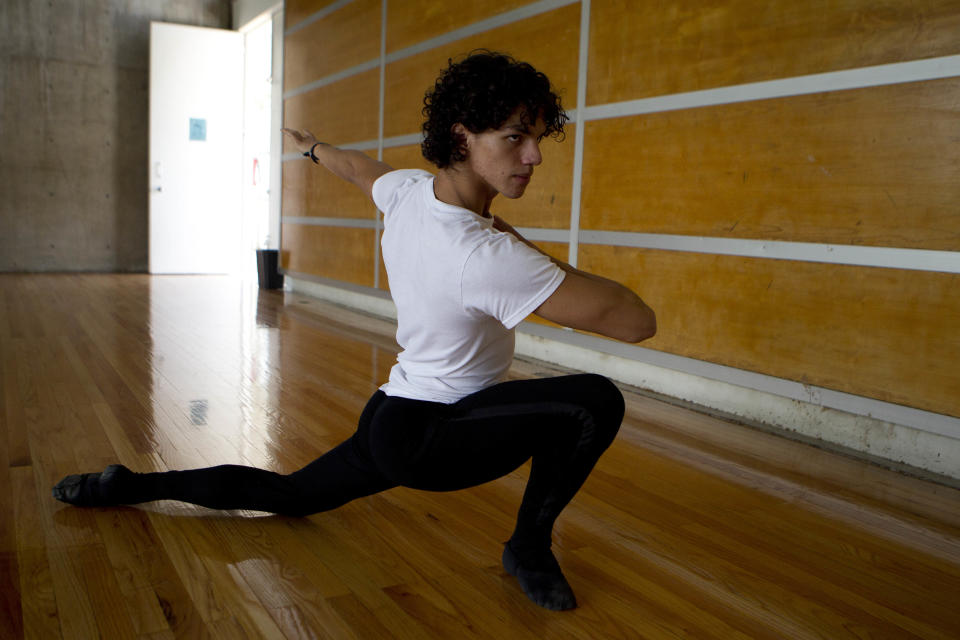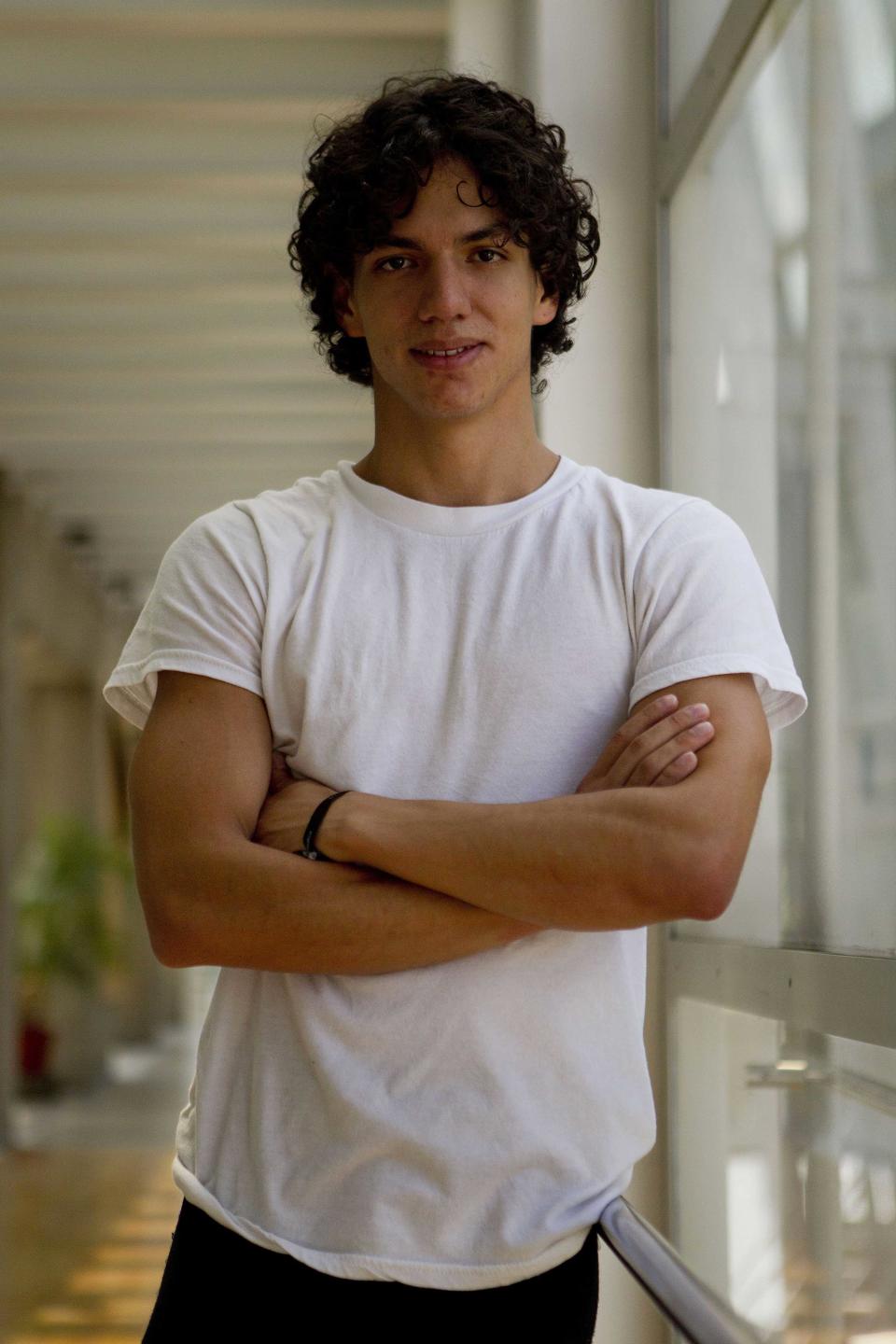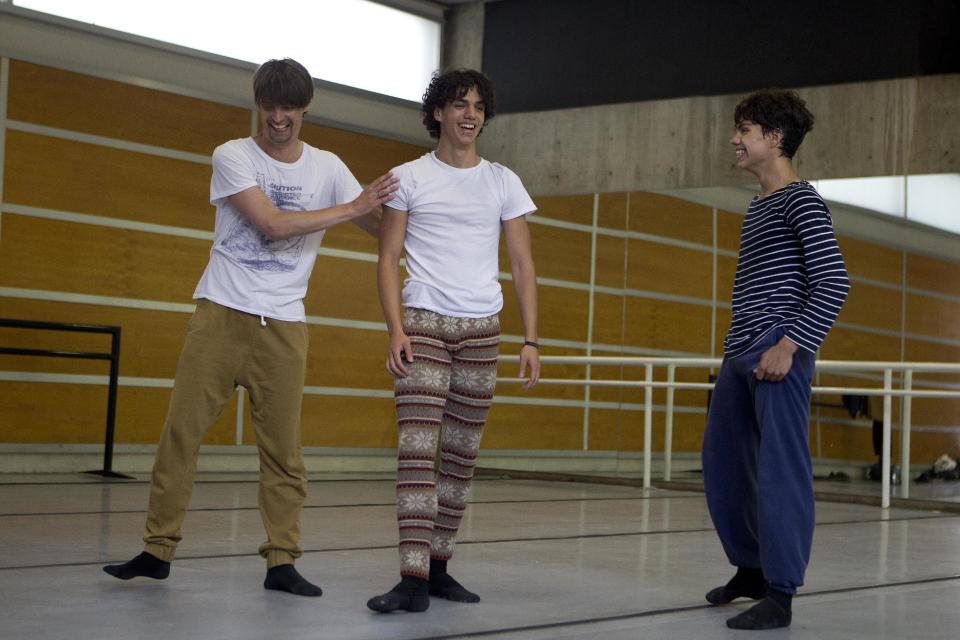World class Mexican dancer seeks to change ballet
MEXICO CITY (AP) — At 22, Isaac Hernandez had danced in Havana, in Moscow, and even in Jackson, Mississippi, but Mexico's most internationally acclaimed male ballet dancer had performed in his home country exactly once — when he was 14.
"I find myself asking why is it that I can dance anywhere in the world, except in Mexico?" he said during a recent interview.
The answer: Mexico doesn't have a history of celebrating ballet.
So even though the Guadalajara native begins a new job this week as a soloist for the Dutch National Ballet in Amsterdam, he has spent much of the past year working to change the profile of ballet in Mexico to cultivate more talent and performances. Hernandez has sought to lead his countrymen to the practice barre in hopes they will grab on and get hooked, just as he did as a boy pirouetting beneath the clotheslines on his parents' uneven concrete patio.
"For an 8-year-old kid to say, 'I want to be a ballet dancer in Mexico,' was madness at that point," Hernandez said in an interview with The Associated Press.
Little has changed since, even as the rest of Latin America has exploded with ballet talent, producing male virtuosos such as Jose Manuel Carreno and Carlos Acosta of Cuba and Argentines Herman Cornejo and Julio Bocca, who now directs the national ballet in Uruguay.
Mexico, known for its frenetic, heel-stomping folklorico dance, has had its share of prima ballerinas, including Elisa Carrillo, a principal dancer for the Berlin Ballet. But it's virtually unheard of for Mexico to produce world-class male dancers. The image persists that ballet is for elites in a country of mostly working class and poor — and definitely not for boys.
So Hernandez decided to stage his own professional performances in Mexico, and also traveled throughout the country to give workshops to students at universities and schools of the arts.
"That has given me a sense of the reality and the needs that they have," he said. "And one of the greatest needs that they have is to have somebody to look up to."
Hernandez, a slender and chiseled 5-foot-10 with wide-set eyes and a mop of black ringlets, grew up as the sixth of 10 children in a ballet family. His father, Hector, danced in Mexico and then for several U.S. companies, including the Harlem Dance Theater and the Houston ballet, where he performed with Hernandez's mother, Laura Elena. The couple run a dance studio in Guadalajara.
Hernandez left home at 12 to study at the Rock School for Dance Education in Philadelphia, where he started to rack up awards and recognition, including a gold medal at the USA International Ballet Competition, one of the major international competitions, at age 16.
Bojan Spassoff, Rock School's president, said Hernandez has always been a dancer of power and precision, showing off a photograph during rehearsal of him soaring through the air in splits.
"Like a rocket," Spassoff said with pride.
In his 2009 debut with the San Francisco Ballet, Hernandez was chosen to dance Tchaikovsky with prima ballerina Tina LeBlanc in one of her final performances. One reviewer called him "fresh-faced" and "a brilliant corps dancer."
While he is not yet a star, many think he could be.
"I think that he is just starting to scratch the surface of his abilities as a dramatic artist," said Mary Ellen Hunt, a dance writer and critic in San Francisco.
Yet he nearly didn't get even this far. At age 15, while at the Rock School, he took a jump and fell to the floor, unable to feel his legs. A doctor told him he had the spine of a 60-year-old man, with three discs nearly fused in his lower back. He couldn't move for weeks or dance for a year, recovering in the rehabilitation facility for the Philadelphia Eagles because his injury was much more common among football players.
"Some of my deepest depressions were at that age. You are losing what makes you happy and it was really out of my hands," he said. "For six months I was laying down on the floor. For the first couple weeks, I could only get up twice a day."
But the moment he could put his hand on the barre again, he knew he wanted to come back.
"When I'm in the ballet studio is the only time that I make sense to myself," he said. "It's the most real thing I know."
Hernandez returned to dance in his native country last November, appearing at the Bellas Artes theater in a program he called "A Moment to Dream," referring to his desire to bring ballet to Mexico. Last week he was back, this time organizing a gala performance called "Awakenings" at Mexico's much larger National Auditorium.
The performance featured dancers from top ballet companies around the world, including the American Ballet Theatre, and mixed classics such as "Don Quixote" and "Black Swan" with more accessible numbers: a dance on snow skis by the illusionist troupe Momix and the Vegas-style Bad Boys of Dance gyrating to Queen.
Hernandez himself performed four numbers, including one with his brother Esteban, 18, who is also causing a stir in the dance world as he finishes his final year at the Royal Ballet of London school. The audience gave the company a standing ovation, cheering and shouting "bravo" each time their native son spun and flew across the stage.
"It's the first time I've see a show like that," said Maria Rosa Perez Fernandez, 32, of Mexico City. "We're used to ballet that is kind of boring. This one, they mixed in contemporary, there was more of a connection between him and the public."
The auditorium that normally holds 10,000 people was cut to 5,000 seats, yielding a full performance but not a sellout. Unlike opening nights in San Francisco, there were no Versace gowns, rather a crowd in jeans and open collars.
"That's the way we have to do it, little by little. It's not going to change from today to tomorrow," Hernandez said. "Mexico and the world are full of problems more important than the loss of culture. But that's what makes us so crazy, to lose the small things that at the end of the day make us more human, that thing called art."






